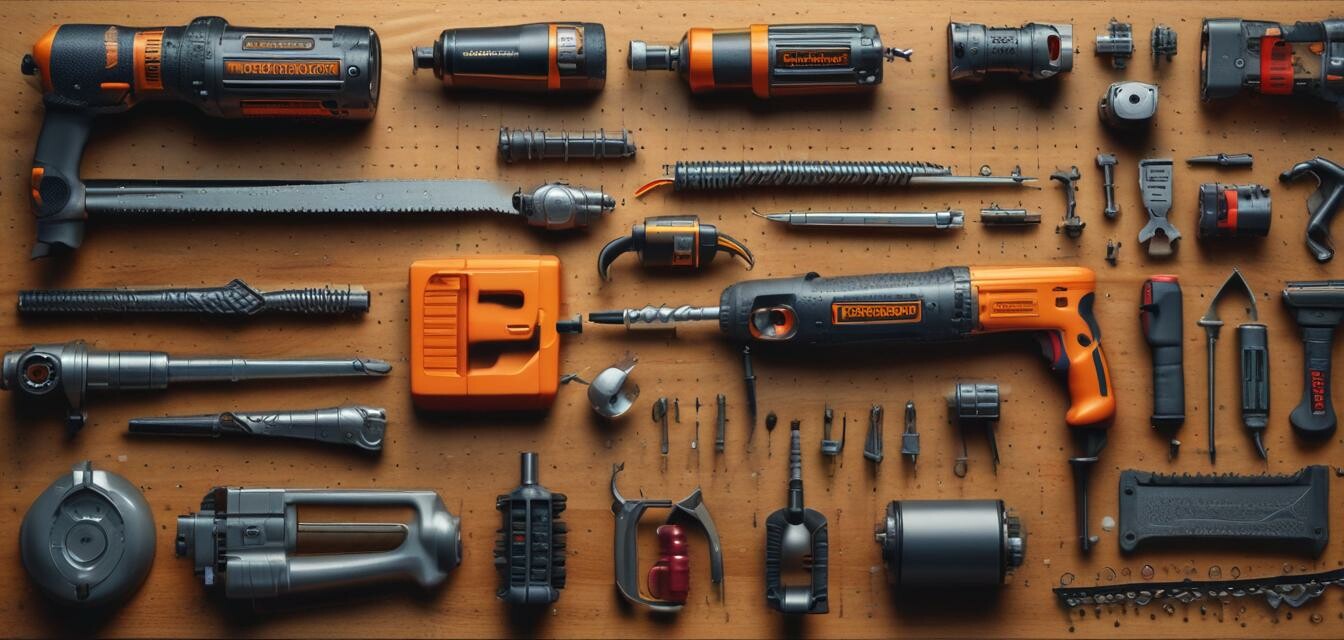
How to Maintain Your Power Tools for Longevity
Key Takeaways
- Regular cleaning is crucial in preventing tool deterioration.
- Lubrication helps to reduce friction and wear, extending tool lifespan.
- Proper storage can protect tools from moisture and dust.
- Check for wear and tear regularly to avoid safety risks.
- Following manufacturer recommendations for maintenance can enhance performance.
Maintaining your power tools is essential for keeping them running smoothly and efficiently. Whether you are a contractor working on the go or a DIY enthusiast, proper maintenance can extend the lifespan of your tools considerably. This guide will provide you with essential tips on how to maintain your portable power tools to ensure they serve you for many years to come.
Importance of Tool Maintenance
Just like any other equipment, power tools need regular maintenance to function optimally. Failing to maintain them can lead to malfunctions, safety hazards, and costly repairs. By dedicating time to proper care, you’ll enhance their performance and reliability, making sure you complete your projects efficiently every time.
Benefits of maintaining your power tools
- Improved efficiency and productivity.
- Increased safety during use.
- Extended life of the tool.
- Reduced downtime caused by repairs.
Tips for Maintaining Your Power Tools
1. Regular Cleaning
After each use, it’s crucial to clean your tools properly. Here’s how:
| Tool Type | Cleaning Method |
|---|---|
| Drills | Wipe with a damp cloth and remove debris from the chuck. |
| Grinders | Blow out dust using compressed air and wipe down surfaces. |
| Saws | Remove sawdust with a brush and lubricate moving parts. |
2. Lubrication
Proper lubrication minimizes friction, which is essential for moving parts. Follow these steps:
- Identify all moving parts of your tool that require lubrication.
- Use manufacturer-recommended lubricants to avoid damage.
- Apply lubricant sparingly to avoid over-saturation.
3. Safe Storage Practices
Storing your power tools correctly is vital to their longevity. Consider the following:
Storage tips
- Store tools in a dry, dust-free environment.
- Use protective cases or bags to prevent moisture damage.
- Keep tools away from extreme temperatures and direct sunlight.
4. Checking for Wear and Tear
Routine inspections can help you spot potential issues before they become serious. Here's what to look for:
- Check cords and plugs for fraying or damage.
- Inspect blades and bits for dullness or chipping.
- Listen for unusual noises during operation, indicating wear.
Recommended Maintenance Schedule
Establishing a maintenance schedule can help ensure regular upkeep. Here’s a helpful table:
| Task | Frequency |
|---|---|
| Clean tools | After each use |
| Lubricate moving parts | Monthly |
| Inspect for wear | Every three months |
| Full maintenance checks | Annually |
Conclusion
By following these maintenance tips, you can ensure that your power tools remain in excellent condition for years. Maintaining your tools isn’t just about prolonging their life; it’s also about ensuring safety and efficiency in every project you undertake. For more tips on selecting the right tools for your needs, check out our Buying Guides.
Pros
- Regular maintenance improves efficiency.
- Enhances safety and reliability.
- Can save on costly repairs in the long run.
Cons
- Regular maintenance requires time and effort.
- Neglecting maintenance can lead to serious issues.
For more information on different types of power tools and their proper usage, don’t forget to check our sections on Cordless Drills, Angle Grinders, and Impact Drivers.
